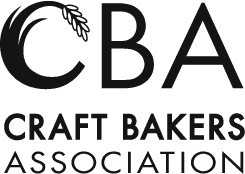Sep 8, 2025
Hugo Walker
With summer drawing to a close, many food manufacturers are already turning their attention to the final quarter of the year. The period from September through to Christmas is traditionally the most demanding, as customers increase volumes and retailers push seasonal lines.
But with labour markets still tight, supply chains vulnerable and customer expectations higher than ever, success in the busy season is no longer about "coping". It's about being proactive. The manufacturers who thrive are those who start preparing now.
Here's why early planning matters — and how forward-thinking businesses are setting themselves up for success.
Why Early Planning is Non-Negotiable
Demand Doesn't Wait
Retailers, wholesalers and distributors expect certainty. If you're not ready to confirm volumes, lead times and delivery schedules early, opportunities can quickly shift to better-prepared competitors.
Bottlenecks Multiply Under Pressure
Every small inefficiency — from manual ordering errors to poor production scheduling — becomes magnified when orders double or triple. What feels manageable in August can quickly turn into chaos by November.
Costs Rise When You React Late
Leaving things until the last minute often means relying on overtime, agency staff or emergency ingredient sourcing. All of these erode margin at the exact time you should be capitalising on demand.

Four Ways to Get Ahead of the Curve
1. Streamline How Orders Flow Into the Business
Manual order taking (phone calls, emails, WhatsApp) may tick along in quieter months, but it crumbles under peak volumes. Standardising and digitising order capture reduces errors, provides real-time visibility and ensures production can be planned with confidence.
2. Build Better Supply Chain Visibility
The ongoing challenges of ingredient shortages, long lead times and volatile pricing mean "just in time" alone is risky. Stronger demand forecasting and supplier communication allow manufacturers to spot potential gaps early and build in contingency stock. Data-driven visibility beats guesswork every time.
3. Optimise Scheduling and Capacity Management
Busy periods are where production efficiency really counts. Smart scheduling ensures resources — people, machinery and raw materials — are used to maximum effect. The ability to flex quickly when orders spike separates manufacturers who deliver smoothly from those who burn out teams with overtime.
4. Invest in Your People Before the Rush
Technology can relieve pressure, but your teams are still central to success. Training seasonal staff early, refreshing standard operating procedures and removing unnecessary admin allows skilled employees to focus on quality and customer service when demand surges.

Setting the Tone for Q4 and Beyond
The manufacturers who prepare in August and September don't just survive the busy season; they create room to grow. Instead of firefighting, they're able to take on additional volumes and deliver reliably.
The lesson is clear: Preparation is a competitive advantage. By the time the first wave of seasonal orders lands, it’s already too late to overhaul how you operate.
Now is the moment to assess bottlenecks, invest in smarter systems and give your teams the tools to succeed. The businesses that act early will enter the final quarter with confidence and emerge stronger when the peak season dust settles.
mezzeIQ's market-leading ordering and automation platform helps food manufacturers run leaner, faster and more profitably. Contact us to learn more.






